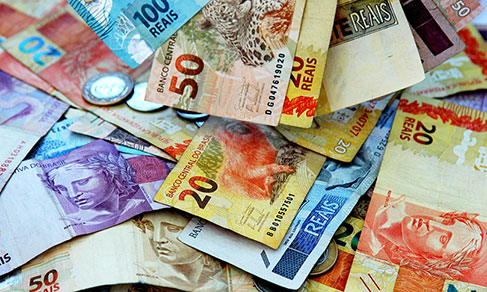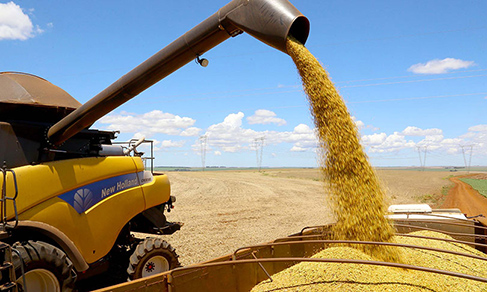IPP
Prices in industry decrease 3.07% in May
June 29, 2023 09h00 AM | Last Updated: July 01, 2023 03h09 PM

For the fourth consecutive month, industry prices had a negative change, registering a drop of 3.07% in May compared to April. The Producer Price Index (IPP) accumulates -9.20% in 12 months, the biggest retraction of the time series for this indicator. The cumulative index in the year reached -4.04%. This is the lowest cumulative rate in the year ever recorded for a month of May since the beginning of the time series in 2014.
In May 2023, 20 of the 24 industrial activities surveyed had negative price changes when compared to the previous month. In April, 13 activities had presented negative price changes in relation to the previous month. The data were disclosed today (29) by the IBGE.
The industrial activities responsible for the greatest influence on the May result were petroleum refining and biofuels (-1.16 pp), other chemical products (-0.47 pp), mining and quarrying industries (-0.47 pp) and food (-0.42 pp). The most significant changes came from petroleum refining and biofuels (-10.47%), mining and quarrying industries (-9.32%), other chemical products (-5.78%) and paper and pulp (-5.51%).
“In the last five months, we have seen a growing appreciation of the real against the dollar. This causes a decrease in prices in Brazilian currency, one of the reasons that explain the greater number of activities with price reductions. The export sectors, naturally, are the most affected”, explains Alexandre Brandão, IPP analyst.
The petroleum refining and biofuels sector was the highlight of May, exerting the greatest impact on the index for the month. It is the sixth consecutive negative result and the highest since April 2020 (-20.61%). The decrease in the price of diesel fuel, the most important product in the activity, was decisive for the result.
“There is a direct connection between the drop in the price of crude oil, observed not only in Brazil but worldwide, and refining products. The current higher supply of petroleum causes a price reduction”, adds Mr. Brandão.
With the second greatest influence on the May index, prices in the sector of other chemical products have been on a deflationary path since July 2022. The 5.78% reduction in prices compared to April was the biggest drop since then, in addition to having been one of the sharpest this month. Mr. Brandão highlights that some products derived from petroleum, such as naphtha, influenced the result: “Many products are derived from naphtha, the petrochemicals. Naphtha prices are falling worldwide, as are propylene's. In the case of fertilizers, in addition to the normalization of the international market after the opening of the port in Ukraine, with the end of the soybean harvest in Brazil, there is a lower demand for the product”.
The activity of mining and quarrying industries recorded, for the first time in the year, a negative change in prices (-9.32%). Thus, the Cumulative index in the year, which was at 15.59% in April, reached 4.82%. “China sets the pace for the iron ore market. With the decrease in demand there, there was a direct impact here and in the rest of the world”, points out Mr. Brandão.
On the other hand, the sectors of beverages and motor vehicles stood out among those that showed positive price changes. “The rise in vehicle prices, the 35th in a row, is something that has been happening over time. However, increases have been at lower levels than those observed a year ago, for example”, concludes Mr. Brandão.
From the perspective of the major economic categories, the change in prices observed from April to May 2023 had the following repercussions: -0.75% change in capital goods; -4.51% in intermediate goods; and -1.32% in consumer goods, with the change observed in durable consumer goods being 0.20%, while in semi-durable and non-durable consumer goods it was -1.61%. The main influence among the major economic categories was exerted by intermediate goods, whose weight in the composition of the general index was 55.50% and accounted for -2.54 pp of the -3.07% change in mining and quarrying and manufacturing industries. Closing the list are consumer goods, with an influence of -0.48 pp, and capital goods with -0.06 pp. In the case of consumer goods, the influence registered in May is divided into 0.01 pp, which was due to the price changes of durable consumer goods, mainly cars (whose weight in the calculation of this category is 57.18%) and -0.49 pp, associated with the change of semi-durable and non-durable consumer goods.
More about the survey
The IPP tracks the average change in sales prices received by domestic producers of goods and services, and its evolution over time, signaling short-term inflationary trends in the country. It is an essential indicator for macroeconomic monitoring and a valuable analytical tool for decision makers, either public or private.
The survey investigates, in just over 2,100 companies, the prices received by the producer, exempt from taxes, tariffs and freight, defined according to the most usual commercial practices. About 6,000 prices are collected every month. The complete IPP tables are available at Sidra database. The next release of the IPP, referring to June, will be on July 27th.




















